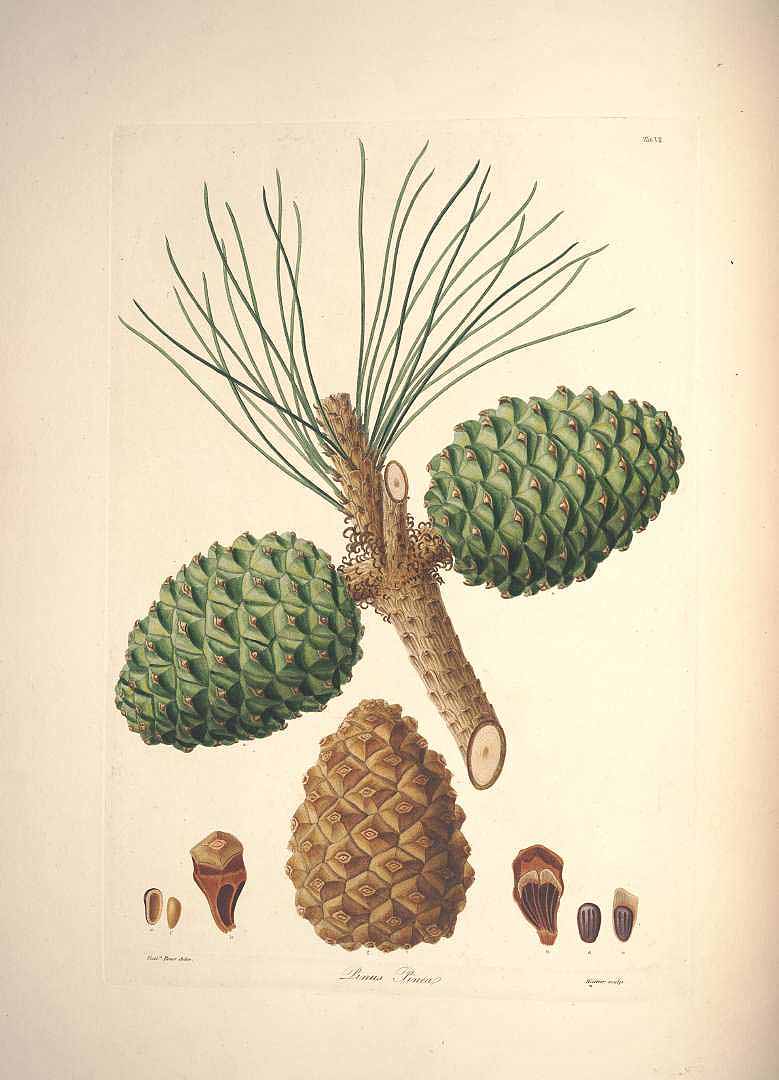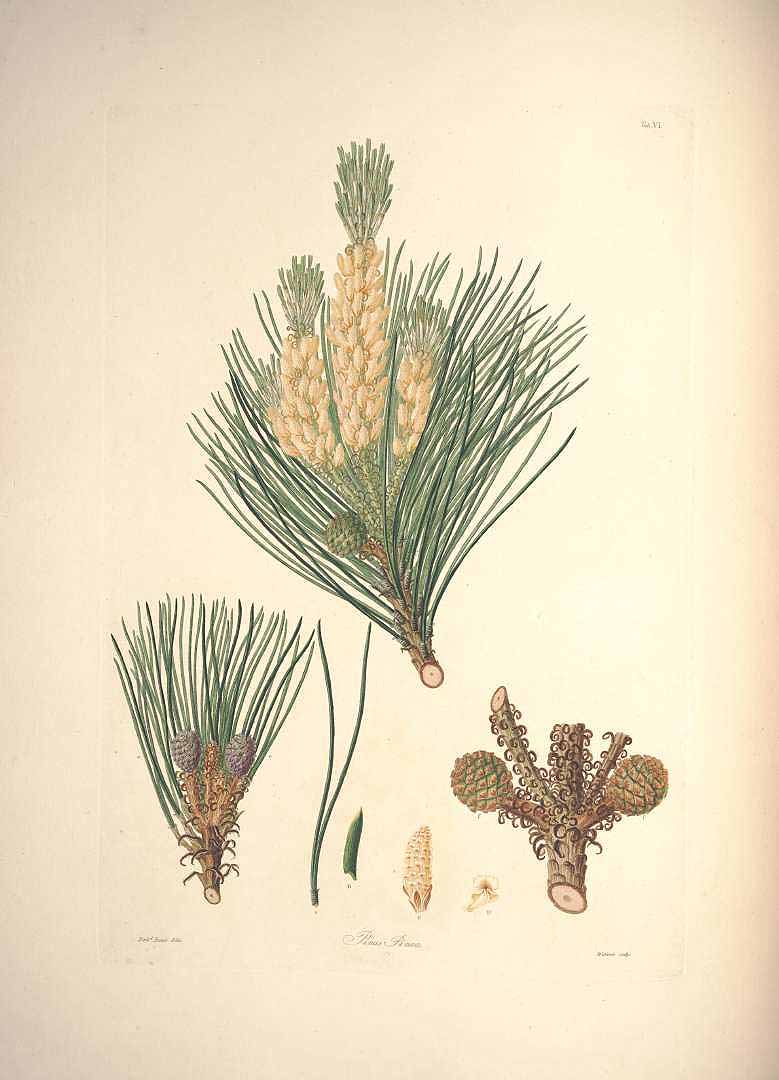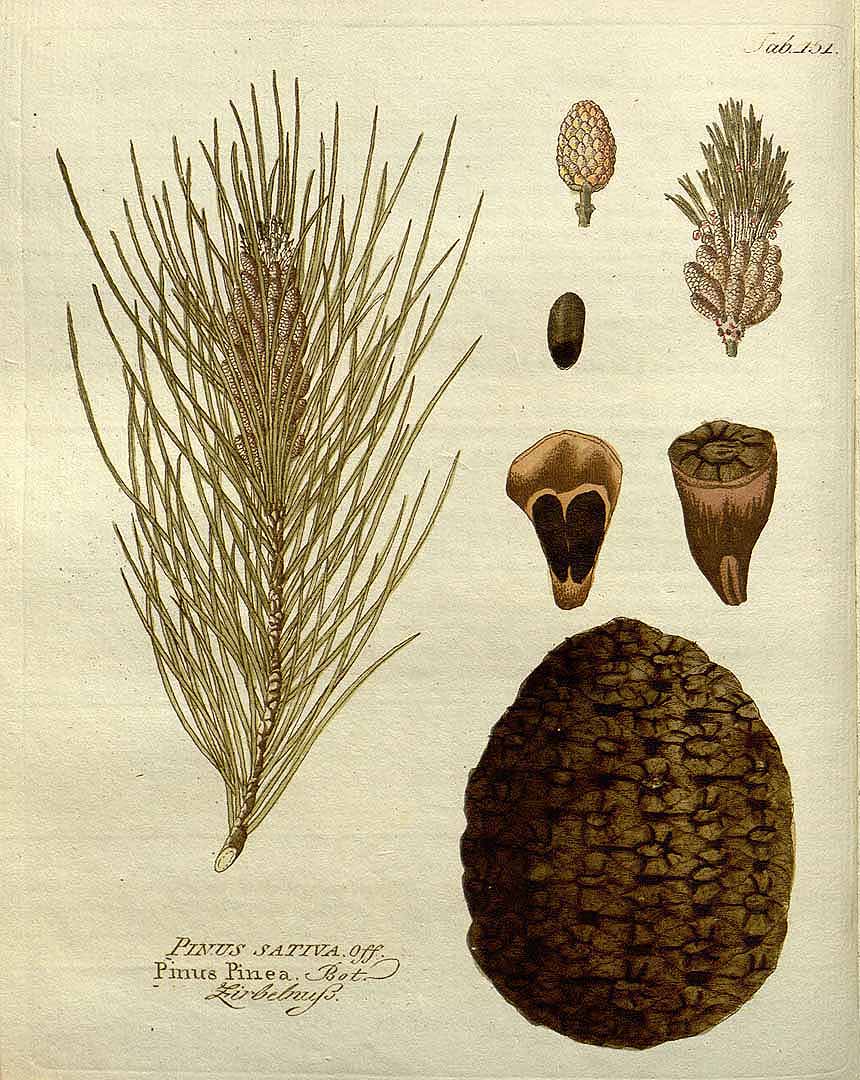! Nouveau site ici !
Vita > Plantae > Coniferophyta > Pinopsida > Pinales >
Pinaceae > Pinus
Pinus pinea
(Pin parasol)

 | ****
| ****
Vita > Plantae > Coniferophyta > Pinopsida > Pinales >
Pinaceae > Pinus
Pinus pinea
(Pin parasol)

-15/-18°C et même -20°C dans de bonnes conditions (-5/-12°C?)
Un arbre au sommet plat. Il peut atteindre 27 m de haut. Les branches rayonnent vers le haut comme les côtes d'un parapluie. L'écorce est brun clair et se fissure en longues assiettes plates. Les feuilles son... (traduction automatique)
→suite
⬀
Le  donne accès au menu
donne accès au menu (c'est votre point de repère) 😊 ;
En dessous vous avez la classification, à partir de la vie (Vita, premier rang) jusqu'à la classe au dessus de la plante, dont vous trouvez ensuite le nom scientifique/botanique (latin) puis le nom commun (français), le cas échéant ;
C'est aussi un lien vers la fiche complète (tout comme la ✖, en bas à droite, et le +, en dessous de la description) ;
Vient alors l'illustration (ou ce qui la remplace, en attendant), la comestibilité :
Et en bas
⬂

![Illustration Pinus pinea, Par Duhamel du Monceau, H.L., Traité des arbres et arbustes, Nouvelle édition [Nouveau Duhamel] (1800-1819) Traité arbr. arbust., ed. 2 vol. 5 (1812) t. 73, via plantillustrations Illustration Pinus pinea, Par Duhamel du Monceau, H.L., Traité des arbres et arbustes, Nouvelle édition [Nouveau Duhamel] (1800-1819) Traité arbr. arbust., ed. 2 vol. 5 (1812) t. 73, via plantillustrations](../inc/images/illustrations/pinus_pinea.jpg )



![Illustration Pinus pinea, Par Laguna y Villanueva, M., Avilla y Zumarán, P. de, Flora forestal española [2.ª ed.], Atlas (1883-1890) Fl. Forest. Españ., ed. 2 vol. 1 (1884) t. 4, via plantillustrations Illustration Pinus pinea, Par Laguna y Villanueva, M., Avilla y Zumarán, P. de, Flora forestal española [2.ª ed.], Atlas (1883-1890) Fl. Forest. Españ., ed. 2 vol. 1 (1884) t. 4, via plantillustrations](../inc/images/illustrations/pinus_pinea4.jpg )
![Illustration Pinus pinea, Par Laguna y Villanueva, M., Avilla y Zumarán, P. de, Flora forestal española [2.ª ed.], Atlas (1883-1890) Fl. Forest. Españ., ed. 2 vol. 1 (1884) t. 4, via plantillustrations - Fermer Illustration Pinus pinea, Par Laguna y Villanueva, M., Avilla y Zumarán, P. de, Flora forestal española [2.ª ed.], Atlas (1883-1890) Fl. Forest. Españ., ed. 2 vol. 1 (1884) t. 4, via plantillustrations - Fermer](../../inc/images/illustrations/pinus_pinea4.jpg )




